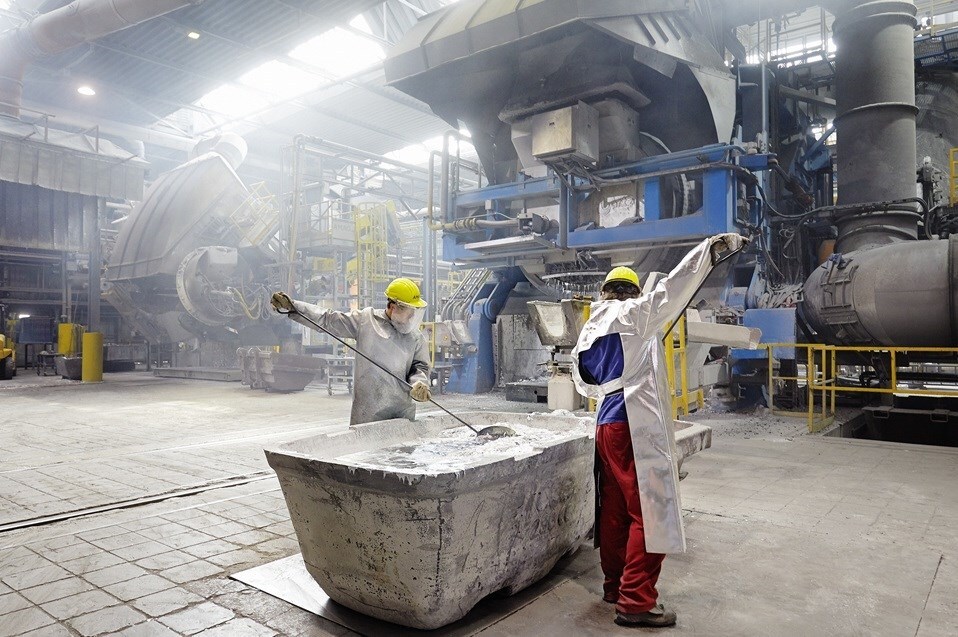

AMAG Austria Metall AG has reported its financial results for the third quarter and first nine months of 2025, demonstrating resilience in a persistently challenging global environment. Despite ongoing pricing pressure, weaker demand, and trade-related headwinds, the company managed to lift nine-month revenues and deliver a strong improvement in cash flow through disciplined cost management, operational efficiency, and a focus on liquidity.

Q3/2025 vs Q3/2024 performance
In the third quarter of 2025, AMAG generated revenues of EUR 350.8 million (USD 405.8 million), compared with EUR 370.9 million (USD 429 million) in the same quarter of the previous year, representing a decline of 5.4 per cent.
EBITDA for the quarter came in at EUR 33.5 million (USD 38.7 million), remaining broadly stable compared to Q2/2025, despite rising pressure from US tariffs and heightened price sensitivity. However, this marks a 35.8 per cent decline from EUR 52.2 million (USD 60 million) in the same period last year.
Net income after taxes amounted to EUR 10.4 million (USD 12 million), down 50.3 per cent from EUR 20.9 million (USD 24 million) in Q3/2024.
The total shipments reached 100,400 tonnes, down 8.0 per cent year-on-year from 109,100 tonnes, while external shipments totalled 92,400 tonnes, a 6.7 per cent decrease compared with 99,000 tonnes in Q3/2024.
But cash flow from operating activities rose sharply by around 74 per cent to EUR 58.5 million (USD 67.6 million), up from EUR 33.6 million (USD 38.8 million) in Q3/2024, driven by working capital optimisation and cost control. Investments were reduced by around 35 per cent to EUR 13.4 million (USD 15.5 million), compared to EUR 20.7 million (USD 23.9 million) a year earlier. As a result, free cash flow increased substantially by 246 per cent to EUR 45.1 million (USD 52 million), up from EUR 13 million (USD 15 million) in Q3/2024.
Also read: Fourth year running: AMAG claims top 1% ESG ranking worldwide for aluminium
Nine-Month performance: Revenue growth and strong financial discipline
For the first nine months of 2025, AMAG recorded revenues of EUR 1.1 billion (USD 1.2 billion), reflecting a 5.4 per cent increase compared to EUR 1.07 billion (USD 1.15 billion) in the same period of 2024. The rise was mainly driven by higher aluminium prices.
EBITDA reached EUR 114.2 million (USD 132 million), a 22.6 per cent decrease from EUR 147.6 million (USD 170 million) in the first nine months of 2024.
Operating profit (EBIT) for the reporting period was EUR 53.2 million (USD 61.5 million), down 34.1 per cent from EUR 80.7 million (USD 93.3 million), while net income after taxes came in at EUR 33.8 million (USD 39 million), representing a 37.7 per cent decline from EUR 54.3 million (USD 62.8 million) a year earlier.
Cash flow from operating activities increased by 23.3 per cent to EUR 134.8 million (USD 155.9 million), compared to EUR 109.3 million (USD 126 million) in the previous year. Investments were reduced noticeably to EUR 40.6 million (USD 46.9 million), from EUR 69 million (USD 79.8 million) in Q1–Q3/2024. This reduction supported a strong rise in free cash flow, which grew by 134 per cent to EUR 94.2 million (USD 108.9 million), compared with EUR 40.2 million (USD 46.5 million) in the same period of 2024.
The company also strengthened its balance sheet. Net financial debt declined significantly to EUR 344.4 million (USD 398 million) as of 30 September 2025, from EUR 382.3 million (USD 442 million) at the end of 2024.
Dr. Helmut Kaufmann, Chief Executive Officer of AMAG Austria Metall AG, said, “The wide-ranging stabilisation measures we have intensified in recent months are already bearing fruit. Through productivity increases at the Ranshofen site, consistent liquidity management and a clear focus on cost efficiency, we were able to largely offset the increasingly negative market influences in the third quarter. In addition, working capital optimisations and targeted investment cuts have significantly strengthened cash flow development.”
Outlook for 2025
The global economic outlook for 2025 remains mixed. US GDP is expected to grow by 1.8 per cent, limited by tariff policies, while the eurozone is forecast to expand by 1.2 per cent. Germany and Austria are projected to see modest growth of 0.2 per cent and 0.3 per cent, respectively.
As US is one of the world’s largest markets for beverage cans, an uptick in economic activity is likely to boost consumption and, in turn, demand for can sheet raw materials. Against this backdrop, the Management Board anticipates full-year 2025 EBITDA to reach the upper end of the EUR 110–130 million (USD 127–150 million) guidance range, though potential valuation effects could still significantly influence the final outcome.
To know more about the global recycled aluminium industry, read “World Recycled ALuminium Market Analysis Industry forecast to 2032”
The company also anticipates limited changes in the economic environment during Q4/2025, with challenges persisting across all divisions. The Metal Division is expected to maintain solid earnings despite the removal of US tariff exemptions for Canada, while the Casting and Rolling Divisions continue to face margin pressure from price sensitivity and trade policy headwinds.
Responses








